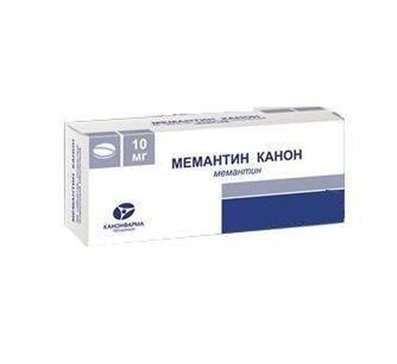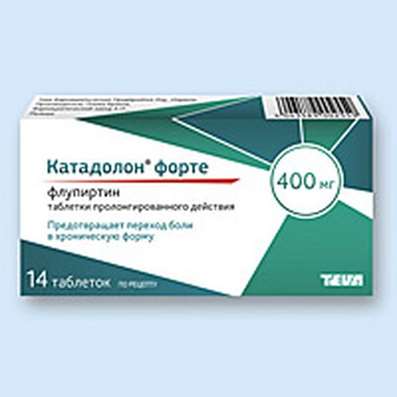Instruction for use: Pidotimod
I want this, give me price
Trade name of the drug – Imunorix
The Latin name of the substance Pidotimod
Pidotimodum (genus. Pidotimodi)
Chemical name
(4R) -3 - [(2S) -5-Oxo-pyrrolidine-2-carbonyl] -1,3-thiazolidine-4-carboxylic acid
Gross Formula
C9H12N2O4S
Pharmacological group:
Other immunomodulators
The nosological classification (ICD-10)
D84.9 Unspecified Immunodeficiency: Pneumonia in immunodeficient states; Autoimmune disease; Autoimmune diseases; Severe immunodeficiency; immune deficiency; Immunodeficiency; immunodeficiency diseases; Immunodeficiency states due to surgery; Immunotherapy for cancer; Immunomodulation; Infections in patients with weakened immune systems; Correction of immune deficiency; Correction of immunodeficiencies; Correction of a weakened immune system; Correction of a weakened immunity in immunodeficient states; Violation of immunity; Violation of the immune status; Immune System Disorders; Primary immunodeficiency; Maintaining immunity; Lowering the body's defenses; Lowering the immunity; Lowering the immunity of colds and infectious diseases; The decrease of the immune status; Lowered resistance to infections; Lowered resistance to infections and colds; Lowered resistance; Immunosuppression; Predisposition to colds; acquired immune deficiencies; Radiation immunodeficiency; The development of immunodeficiency; Immune dysfunction syndrome; immunodeficiency syndrome; primary immunodeficiency syndrome; Reducing the body's defenses; Immunosuppression; Reduced immune defense; Reducing local immunity; Reducing the total body resistance; The decrease in cell-mediated immunity; Reduced resistance to infections in children; Reducing the body's resistance; Reduced resistance; reduced immunity; Status immunodeficiency; Stimulation of the processes of nonspecific immunity; Heavy selective secondary immunodeficiency; immunity Oppression; Primary immunodeficiency
J06 Acute upper respiratory tract infections of multiple and unspecified locations: Frequent colds of viral diseases; Infections of ENT organs; Acute respiratory illness of influenza nature; Pain for colds; Acute catarrhal disease; Cold; Colds; Colds; Respiratory infection; Seasonal catarrhal disease; Seasonal colds; Pain in infectious and inflammatory diseases of the upper respiratory tract; Bacterial infections of the upper respiratory tract; Bacterial infections of the respiratory system; Viral respiratory disease; Viral respiratory tract infections; Inflammatory disease of the upper respiratory tract; Inflammatory diseases of the upper respiratory tract; Inflammatory diseases of the upper respiratory tract with difficult to separate sputum; Inflammatory respiratory disease; Secondary infections for colds; Difficult sputum separation in acute and chronic respiratory diseases; Upper respiratory tract infections; Infections of the upper respiratory tract; Respiratory tract infections; Respiratory and lung infections; Infectious-inflammatory diseases of the upper respiratory tract; Infectious-inflammatory diseases of the upper respiratory tract and ENT organs; Infectious-inflammatory diseases of the upper respiratory tract in adults and children; Infectious-inflammatory diseases of the upper respiratory tract; Infectious inflammation of the respiratory tract; Respiratory tract infection; Qatar upper respiratory tract; Catarrh of the upper respiratory tract; Catarrh of the upper respiratory tract; Catarrhal phenomena from the upper respiratory tract; Cough in diseases of the upper respiratory tract; Cough for colds; ARVI; ARI; ARI with phenomena of rhinitis; Acute respiratory infection; Acute infectious-inflammatory disease of the upper respiratory tract; Acute respiratory disease; Persecution in the throat or nose; Respiratory and viral infections; Respiratory diseases; Respiratory infections; Recurrent respiratory tract infections; Secondary infections with influenza; Influenza states; Feverish conditions for influenza
J22 Acute respiratory infection of lower respiratory tract, unspecified: Bacterial respiratory disease; Bacterial infections of the lower respiratory tract; Bacterial infections of the respiratory system; Viral respiratory disease; Viral respiratory tract infections; Inflammatory respiratory disease;; Difficult sputum separation in acute and chronic respiratory diseases; Respiratory tract infections; Respiratory and lung infections; Lower respiratory tract infections; Infections of the lower respiratory tract; Infectious inflammation of the respiratory tract; Infectious diseases of the respiratory tract; Infectious diseases of the lungs; Infectious diseases of the respiratory system; Respiratory tract infection; Cough for colds; Pulmonary infection; Acute respiratory tract infection; Acute respiratory viral infection; Acute inflammatory airway disease; Acute respiratory disease; Respiratory infection; Respiratory and viral infections; Respiratory syncytial viral infection in young children; Respiratory diseases; Respiratory infections
N39.0 Urinary tract infection without established localization: Fungal infections of the urinary tract; Asymptomatic bacteriuria; Bacterial infections of the urinary tract; Bacterial infections of the urinary tract; Bacterial infections of the genitourinary system; Bacteriuria; Bacteriuria asymptomatic; Bacteriuria chronic latent; Asymptomatic bacteriuria; Asymptomatic massive bacteriuria; Inflammatory urinary tract disease; Inflammatory urinary tract disease; Inflammatory diseases of the bladder and urinary tract; Inflammatory diseases of the urinary system; Inflammatory diseases of the urinary tract; Inflammatory diseases of the urogenital system; Fungal diseases of the urogenital tract; Urinary Tract Infections; Urinary Tract Infections; Infections of the urinary system; Urinary tract infections; Urinary Tract Infections; Urinary tract infections caused by enterococci or mixed flora; Urinary tract infections uncomplicated; Urinary tract infections complicated; Infections of the urogenital system; Infections urogenital; Infectious diseases of the urinary tract; Urinary Tract Infection; Urinary tract infection; Urinary system infection; Urinary tract infection; Urinary tract infection; Infection of the urogenital tract; Uncomplicated urinary tract infections; Uncomplicated urinary tract infections; Uncomplicated urinary tract infections; Uncomplicated infections of the genitourinary system; Exacerbation of chronic urinary tract infection; Retrograde kidney infection; Recurrent urinary tract infections; Recurrent urinary tract infections; Recurrent infectious diseases of the urinary tract; Mixed urethral infections; Urogenital infection; Urogenital Infectious-Inflammatory Disease; Urogenital mycoplasmosis; Urologic disease of infectious etiology; Chronic urinary tract infection; Chronic inflammatory diseases of the pelvic organs; Chronic urinary tract infections; Chronic infectious diseases of the urinary system
CAS code
121808-62-6
Pharmacology
Pharmacological action - immunostimulating.
Pharmacodynamics
Pidotimod stimulates and regulates cellular immunity.
Pidotimod induces the maturation and formation of immunocompetent T-lymphocytes in their deficiency, which are assigned the role of coordinators of specific immunity under physiological conditions due to partial replacement or enhancement of the functions of the thymus gland. In addition, pidotimod stimulates macrophages, the main function of which is to capture the antigen and its presentation on the cell membrane in combination with histocompatibility antigens. The ability of the organism to counteract infectious agents is expressed in effective specific immune, cellular and antigen-antibody protective responses.
Pidotimod has therapeutic effects through immunostimulating effect on innate immunity and production of antibodies, on cellular immunity and on the production of cytokines.
Pidotimod increases the production of superoxide anions, TNFα, NO (bactericidal action), as well as chemotaxis and, accordingly, phagocytosis. Pidotimod also increases the cytotoxic activity of natural killers.
Pidotimod enhances the functional activity of T and B lymphocytes, enhances the stimulation of the antigen-antibody reaction, and interferes with the development of dexamethasone-induced apoptosis, 12-O-tetradecanoylphorbol-13-acetate and calcium ionophore A-23187. Pidotimod increases IL-2 content in old rats and IL-2 gene expression in rat spleen. In particular, it has been shown that pidotimod has an immunostimulating effect, especially in cases of deficiency of the immune system, as well as in its functioning at the physiological level.
Pharmacokinetics
When ingested absorption is high. Bioavailability is 45%, T1 / 2 - 4 hours. Pidotimod is excreted unchanged in the urine (95% of the administered IV dose).
The speed and degree of absorption of the pidotimod is significantly reduced by simultaneous intake with food. Compared to fasting, the bioavailability with oral intake decreases with food up to 50%, the C max in the serum is reached 2 hours later.
Pharmacokinetic studies with elderly patients showed no difference from the pharmacokinetics in adults.
Pidotimod is completely excreted in the urine, T1 / 2 increases with renal insufficiency. Nevertheless, even with severe renal failure (5 mg / dl creatinine in blood plasma), the P1 does not exceed 8-9 hours. Since patients take the drug every 12 or 24 hours, there is no risk of cumulation in renal failure.
Studies with hepatic insufficiency have not been carried out, because Pidotimod is almost completely excreted from the body with urine unchanged.
Application of the substance Pidotimod
Immunostimulating therapy of disorders in the cell link of immunity in infections of the upper and lower respiratory and urinary tracts.
It is used both to prevent exacerbations and to reduce the duration and severity of individual episodes, and as an adjuvant in antibiotic therapy for acute infections.
Contraindications
Hypersensitivity to pidotimod, fructose intolerance, children under 3 years.
Restrictions
With caution in patients with hyperimmunoglobulinemia syndrome E with previously encountered allergic reactions or atopy.
Application in pregnancy and breastfeeding
Experience with pidotimoda in pregnant women is absent or limited (less than 300 pregnancy outcomes). Studies in animals have not revealed direct or indirect adverse effects on reproductive function.
It is advisable to avoid the use of pidotimod in the first trimester of pregnancy.
There is no data on the isolation of the podotimod or its metabolites in breast milk. Women are advised not to breast-feed during the treatment period in order to avoid the effect of the active substance on the child.
Side effects of Pidotimod
The few undesirable events reported in the clinical trials reports (stomach pains, burning sensation in the stomach) were comparable to undesirable phenomena in placebo groups in double-blind clinical trials; Apparently, these phenomena were associated with concomitant antibiotic therapy.
In the process of post-registration use, the following undesirable effects were reported, the frequency of which was determined according to the following: very often (≥1 / 10); Often (≥1 / 100, but <1/10); Infrequent (≥1 / 1000, but <1/100); Rarely (≥1 / 10000, but <1/1000); Very rarely (<1/10000); Frequency is unknown (cannot be determined from available data).
On the part of the immune system: one case of uveitis and one case of the Shenllein-Genoch syndrome were registered per million patients who received the pidotimod.
From the digestive tract: very rarely - nausea, diarrhea, abdominal pain.
From the skin and subcutaneous tissues: very rarely - manifestations of allergic dermatitis, including hives, rashes on the skin, swelling of the lips, itching.
Interaction
Pidotimod does not bind to plasma proteins and is not metabolized, so pharmacokinetic interaction is not expected. Pidotimod can influence the effectiveness of drugs that suppress or stimulate the functional activity of lymphocytes or affect the activity of the immune system. In animal studies, when combined with other drugs, pidotimode did not cause unwanted interactions with hypoglycemic agents (tolbutamide), antiepileptic drugs (phenobarbital), antihypertensive drugs (nifedipine, captopril, atenolol), diuretics (chlorothiazide), anticoagulants (warfarin), NSAIDs Indomethacin), analgesic (acetylsalicylic acid) or antipyretic (paracetamol).
Overdose
On cases of overdose and drug administration not for the intended purpose was not reported.
Treatment: there are no specific data on the treatment of overdose. In case of an overdose, it is recommended to consult a doctor immediately. Patients need adequate supportive and symptomatic therapy. Careful observation should continue until the patient recovers.
Routes of administration
Inside.
Precautions for the substance Pidotimod
Impact on the ability to drive and other mechanisms. Does not affect.

 Cart
Cart





